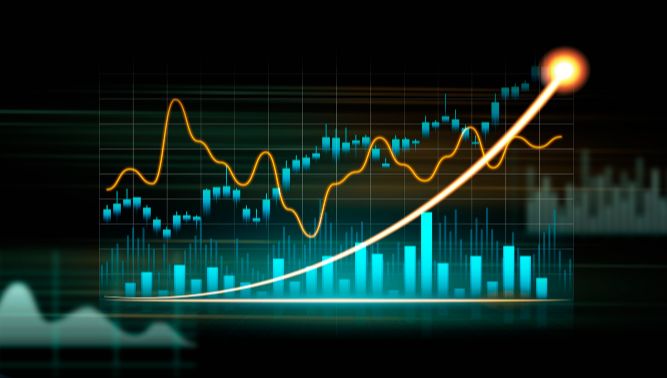Patrick St. Denis, Senior Portfolio Manager, Multi-manager Solutions; Director, Investments
December 3, 2021
It is clear that the US and the rest of the world are in uncharted territory when it comes to the push and pull of inflationary factors influencing everyday life and government-led policies. As with anything displaying short-term volatility, as experienced by the US and global economy, things rarely just revert back or end, but rather dissipate unless a new factor presents itself or an existing factor perpetuates. COVID-19 has been extremely hard to pin down and made harder by the surprising divisiveness by sacrifices asked of citizens, both small (masks) and meaningful (vaccines). The factor seeming to push the recent short-term volatility is inflation, which is being viewed as a lagging factor (we are in an adjustment period) in the case of this economic recovery and driven mostly by a chain of events brought on by consumer behavior as a result of COVID-19. As financial market participants, we shouldn’t be surprised that the recessionary response playbook is never the same nor as cut and dry as we think it will be. The Great Financial Crisis (GFC) recovery took years for employment and GDP rebuild on solid footing and the Federal Reserve (Fed) waited to see what happened in the economy versus what some feared might happen. Along the way though, there were loud critics calling for an increase in rates to avoid possible spike in inflation, which ultimately never came.

Source: Bespoke Research 11/16/2021
Those critics are back again, but this time, they are gaining volume through the political and opinion media heading into 2022 mid-term elections. The Republican party takes daily aim at the Biden Administration policy initiatives and Democrats as being the source of all inflation and gas prices, which for anyone who took an economics class knows is giving any president or political party too much credit. Regardless, the rhetoric is working. The recent UoM consumer sentiment report (shown in the chart, monthly data not available prior to 2016) shows a rather extreme degree of political polarization and although Democrat’s sentiment recently declined, Republicans are indicating sentiment lower than the GFC. It is hard to square this sentiment with high quit rates (a historically strong correlation to positive sentiment) and strong retail spending reports month after month, not to mention the wealth creation many have experienced over the last 12-18 months from increases in home prices, stock market and cash-out refinancing.

Source: Bloomberg
We are still in a period where most year-over-year inflation comps need to be thrown out until the pandemic is over and employment has recovered to service the current levels of demand (which is 21% higher than the pre-COVID level), then we can revisit 12 months later. The Biden administration also read the recent consumer sentiment report loud and clear as they have quickly voiced their intention to help combat inflation. The Fed is acting methodically and by meeting less frequently they can analyze the underlying economic data and not act hastily and put out the fire of every unfavorable opinion poll. No doubt inflation is here, but can we afford to wait and see how persistent it is through the first half of 2022 as Fed Chair Powell recently depicted as the plan forward in November? Perhaps not the popular quick fix choice, it only seems prudent to see how much of the new economy impacts inflation and employment before hastily raising short-term rates based on such a volatile period in which consumer spending continues to beat expectations despite the rise in costs. If the market thinks the Fed is being too dovish, the curve will steepen with long-end rates moving to a more “normalized” level which could motivate the Fed to further tighten sooner.

Source: Bespoke Research 11/16/2021
However, if the Fed decides to pivot on their current stance, then multiple compression reactions in the markets would be expected, which may happen regardless over the coming years, or at very least market indices would need to go sideways for such time to get back to average long-term forward multiples (17x, 22x currently based on price and expected earnings). Moving into the next phase of this recovery, we remain optimistic on the overall economic demand (shifting more toward services than goods), an increase of US exports due to supply constraints easing. If half of the US consumers are grossly concerned about the future health of the economy, we would expect that they will curb spending which will help ease inflationary pressures. In our opinion, the next stage will see show how much of current inflation is driven by healthy factors (wage inflation) versus transitory cost and idiosyncratic price increases.

Source: Federal Reserve Bank of Atlanta
For years leading up to the pandemic, the economy craved higher wages to hit the Fed’s 2% inflation target, but it just never seemed to happen as employment was very tight and low earners struggled. As a result of the pandemic, wage increases are finally happening and are influencing inflation and consumer behavior. Many Americans who own homes or, brokerage accounts or are early crypto investors have experienced significant wealth creation; however, that is not the typical lower-earning American. So, what squares the continually strong retail sales growth rate alongside the current levels of inflation? We believe the answer is higher wages are playing a major role in the price elasticity that companies are taking advantage of. The pandemic responses in the form of direct stimulus checks and the Biden administration’s child tax credits can’t be ignored for putting money in Americans’ pockets in a manner never experienced before. And those returning to work are presented with options and higher wages, something both refreshing for lower earners and helpful for cohesive economic growth.
The views expressed are those of Spouting Rock Asset Management as of December 1, 2021, and are not intended as investment advice or recommendation. For informational purposes only. Investments are subject to market risk, including the loss of principal. Past performance does not guarantee future results. There can be no assurances that any of the trends described will continue or will not reverse. Past events and trends do not imply, predict or guarantee, and are not necessarily indicative of future events or results. Investors cannot invest directly in an index.





